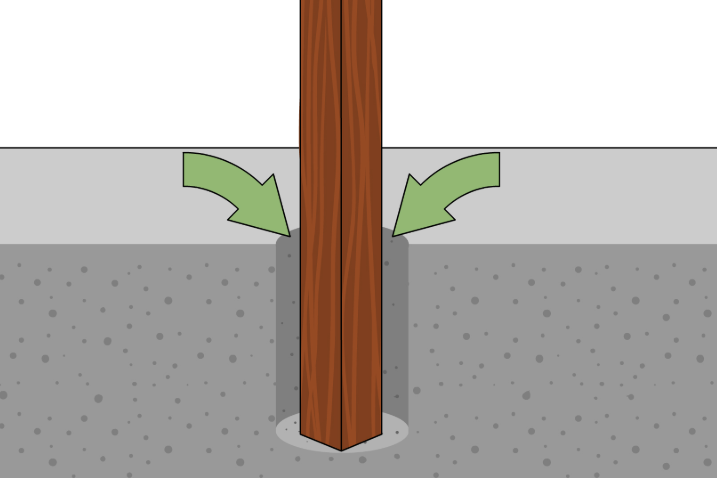What Makes a Fence Post Sturdy?
The foundation of any reliable fence lies in the strength and steadiness of its posts. While fence panels or rails get much visual attention, fence posts anchor the entire structure to the ground. They face constant pressure from wind loads, weather conditions, and shifting soils. Over time, a poorly chosen or inadequately installed post can lead to sagging fences, panels coming loose, or even total collapse during storms. Ensuring each post is installed correctly can save time, money, and frustration later.
Using the proper setting material is critical to achieving optimal strength. Many contractors and DIYers now lean towards innovative products like Fence Post Backfill, which offer enhanced structural support and are simple to apply. This advanced material can make a big difference for longevity and ease of installation, whether securing a garden fence or a heavy-duty security barrier.
Choosing the Right Materials for Fence Posts
Selecting the right post material goes well beyond cost or curb appeal. Traditional wood posts, especially pressure-treated cedar or pine, remain popular for their natural look and widespread availability. However, even with treatment, wood can succumb to rot, insect damage, and shifting soils more rapidly than synthetic options. On average, untreated wood may last less than a decade, while properly maintained treated wood can extend that lifespan to 15–20 years.
Metal posts, including galvanized steel and aluminum, resist moisture and pests. They are an excellent option for those seeking minimal maintenance, as they often go decades without corroding or warping. Meanwhile, vinyl and composite posts eliminate many of the downsides of wood and metal. They don’t rust, rot, or require frequent repainting, and can last 30 years or more. That said, upfront costs are usually higher than wood, so homeowners must balance budget, durability, and style.
Soil and Climate Considerations
Your local soil and weather patterns heavily influence the success of any fence post installation. Clay soils tend to retain water and swell, which can push posts upward during freeze-thaw cycles. On the other hand, Sandy soils drain easily but might not hold posts as firmly, increasing the risk of tilting. Loamy or gravel-laden soils offer stability and drainage, making them ideal for keeping fence posts firmly in position.
Climate cannot be ignored either. In locations with harsh winters, frost heave is a major concern; posts not set deep enough will be forced upward over time. The best practice is to set posts several inches below the frost line, securing the base with durable materials such as gravel, concrete, or modern alternatives for added support. Proper drainage around each post will also dramatically reduce the risk of premature rot or rust.
Innovative Installation Techniques
The fence industry has seen exciting changes in how posts can be set. Traditional methods relied heavily on concrete, with significant weight, labor, and sometimes environmental drawbacks. Today, expanding foam and high-strength, low-water mixes provide excellent alternatives. Their quick setting time and ease of use are attractive to DIYers and professionals alike, and they frequently result in a tighter bond between post and soil.
These innovations also represent a broader push towards environmental awareness within the construction sector. According to research around sustainable building trends, eco-friendlier materials, recycled components, and less resource-intensive installation methods are quickly becoming the industry standard. By adopting these modern techniques, homeowners can reduce their fence’s carbon footprint while increasing strength and reliability.
Cost-Saving Tricks Without Sacrificing Quality
A high-quality fence doesn’t always demand a high price tag. Experienced installers often look for ways to reuse sound posts by trimming or reinforcing them, rather than constantly purchasing new ones. Bulk purchasing fasteners, gravel, or backfill can reduce material costs for big fencing projects. Moreover, knowing how to prepare and level the site before digging will prevent waste and make your materials go further.
Following expertly crafted resources, such as this installation guide from a reputable source, helps avoid rookie mistakes that can lead to instability or repeated repairs. Taking a little extra time for careful planning pays off, especially when measuring post spacing, digging precise holes, and ensuring level installations.
Eco-Friendly Options for the Modern Yard
As environmental awareness grows, more homeowners are exploring sustainable fencing solutions. Composite posts made from recycled plastics and wood fibers use material that would otherwise be wasted. These posts resist rot, pests, and temperature swings, making them a long-lasting and gentle choice. Set compounds are formulated with fewer volatile chemicals and reduced greenhouse gases during manufacturing, appealing to eco-conscious builders.
In addition to composite and advanced backfills, locally sourced, certified wood provides another eco-friendly angle. Wood labeled sustainably harvested helps maintain healthy forests and encourages responsible land use. These innovations make it easier than ever to build sturdy and sustainable fences with aesthetics or reliability.
Common Pitfalls and How to Avoid Them
Even experienced DIY enthusiasts can encounter problems. Setting posts too shallow is a classic error, which can result in gradual leaning or complete instability in soft soil or windy regions. Choosing the wrong backfill, such as untreated soil that easily washes away, can also lead to rot or post-shifting.
Another significant issue is skipping the gravel base under the post or neglecting to address water drainage at the base. For wood posts, lingering moisture can cause considerable decay in just a few years. Using products designed to improve stability and shed water, and investing a little extra effort in prep work, you’ll avoid most of the headaches associated with premature fence failure.
Tips for Maintaining Fence Post Strength
Once your fence is up, regular attention will go a long way. Each year, walk the perimeter and give every post a sturdy shake. Look for any signs of looseness, rot, or shifting. Replace cracked or warped posts before they can compromise the rest of the fence. Trim back bushes and grass to prevent rot-inducing moisture from accumulating around wooden posts.
Many minor issues can be fixed inexpensively—tightening brackets, adding compact backfill, or filling small gaps around a post will ensure the entire structure stays secure. Preventive maintenance is easy, but can mean a quick touch-up and a costly reconstruction.
Answering Common Homeowner Questions
- How deep should fence posts be set?
- The consensus is that at least one-third of the post’s total length should be underground. If your post is 6 feet tall above ground, a 2—to 3-foot deep hole is standard. But in areas with deep frost or loose soil, going a bit deeper ensures extra stability.
- How long do different post materials last?
- Pressure-treated or rot-resistant wood can last 10 to 20 years with good drainage and sealing. Metal posts, especially galvanized ones, can last 30–40 years or longer. Composites or vinyl similarly offer extended durability with little required upkeep.
- Are quick-set and eco-friendly backfills as effective as concrete?
- Modern alternatives provide excellent holding power and moisture resistance. Combined with proper installation techniques, they can outperform traditional mixes and offer quick, lasting results.
From considering advanced materials and techniques to staying on top of yearly maintenance, a sturdy, attractive fence is within easy reach for DIYers and pros alike. Embracing new ideas strengthens fences and smarter investments, benefiting your property and the planet.


